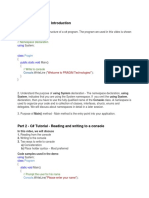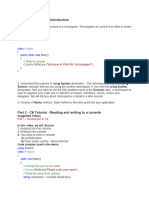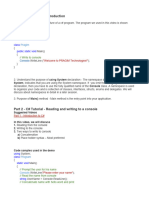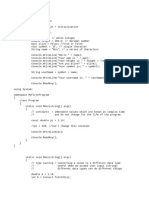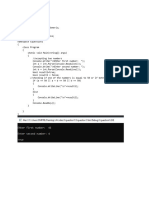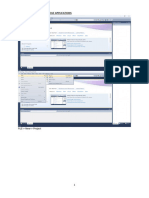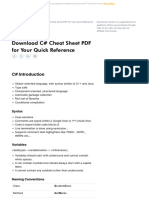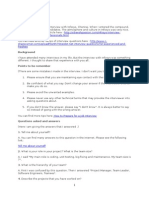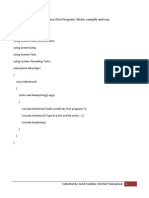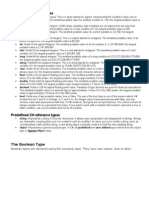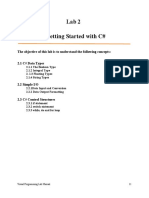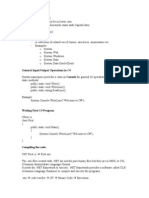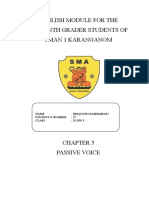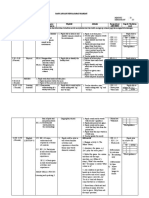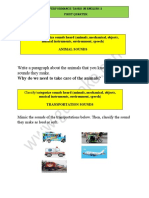0% found this document useful (0 votes)
70 views2 pagesPart 2) Reading and Writing On Console: Program
This document contains code examples demonstrating various C# concepts:
1) Reading user input from the console using Console.ReadLine() and writing output using Console.WriteLine().
2) Using a verbatim string literal @ to print a string containing escape characters literally.
3) The ternary operator ?: to assign a boolean value based on comparing a variable to a value.
4) The null-coalescing operator ?? to assign a non-null value if a nullable type is null.
5) The difference between the Parse() and TryParse() methods, where Parse() throws an exception on invalid input and TryParse() returns a boolean.
Uploaded by
rashidCopyright
© © All Rights Reserved
We take content rights seriously. If you suspect this is your content, claim it here.
Available Formats
Download as DOCX, PDF, TXT or read online on Scribd
0% found this document useful (0 votes)
70 views2 pagesPart 2) Reading and Writing On Console: Program
This document contains code examples demonstrating various C# concepts:
1) Reading user input from the console using Console.ReadLine() and writing output using Console.WriteLine().
2) Using a verbatim string literal @ to print a string containing escape characters literally.
3) The ternary operator ?: to assign a boolean value based on comparing a variable to a value.
4) The null-coalescing operator ?? to assign a non-null value if a nullable type is null.
5) The difference between the Parse() and TryParse() methods, where Parse() throws an exception on invalid input and TryParse() returns a boolean.
Uploaded by
rashidCopyright
© © All Rights Reserved
We take content rights seriously. If you suspect this is your content, claim it here.
Available Formats
Download as DOCX, PDF, TXT or read online on Scribd
/ 2
